- Best Soaker Hose Options Your Yard Truly Needs This Year - January 5, 2024
- Best Tomato Planters You Should Really Consider for Your Garden - December 21, 2023
- Best Home Depot Tomato Cages to Support Your Plants - December 16, 2023
When my husband is craving a BLT, which is often, I know exactly which type of tomato to grab. Brandywine tomatoes are par excellence when it comes to sandwiches; you just can’t get any better. These are big, beefy tomatoes that are full of flavor. I know you’re going to love growing these in your garden and using them in your kitchen. Now, let me show you how.
Bottom Line Upfront
I understand you may be too busy to read this entire article in one sitting, so I put together this quick summary for you. Glance through it, so you get to know Brandywine tomatoes a little better. And then, when you have a BLT on hand, and a few more free minutes, fill in the details by reading the rest.
Brandywine tomatoes are heirloom tomato that has been around since the late 1800s. This variety was cultivated to grow big, juicy tomatoes that have a beautiful flavor. I’ve had some of my Brandywine tomato plants grow fruits that are well over a pound in weight, and as I mentioned before, I think they are the best to eat on sandwiches. Their flavor is slightly sweet, which masks the acidic taste that most other tomato varieties have.
Brandywine tomatoes have a lot of pretentious qualities, but they are not complicated to grow. Their needs are similar to any other tomato plant growing in a garden plot, but I think they give a lot more back than any other tomato variety. These are just really delicious tomatoes, and that is why I think you should have them in your garden.
How to Identify Brandywine Tomatoes
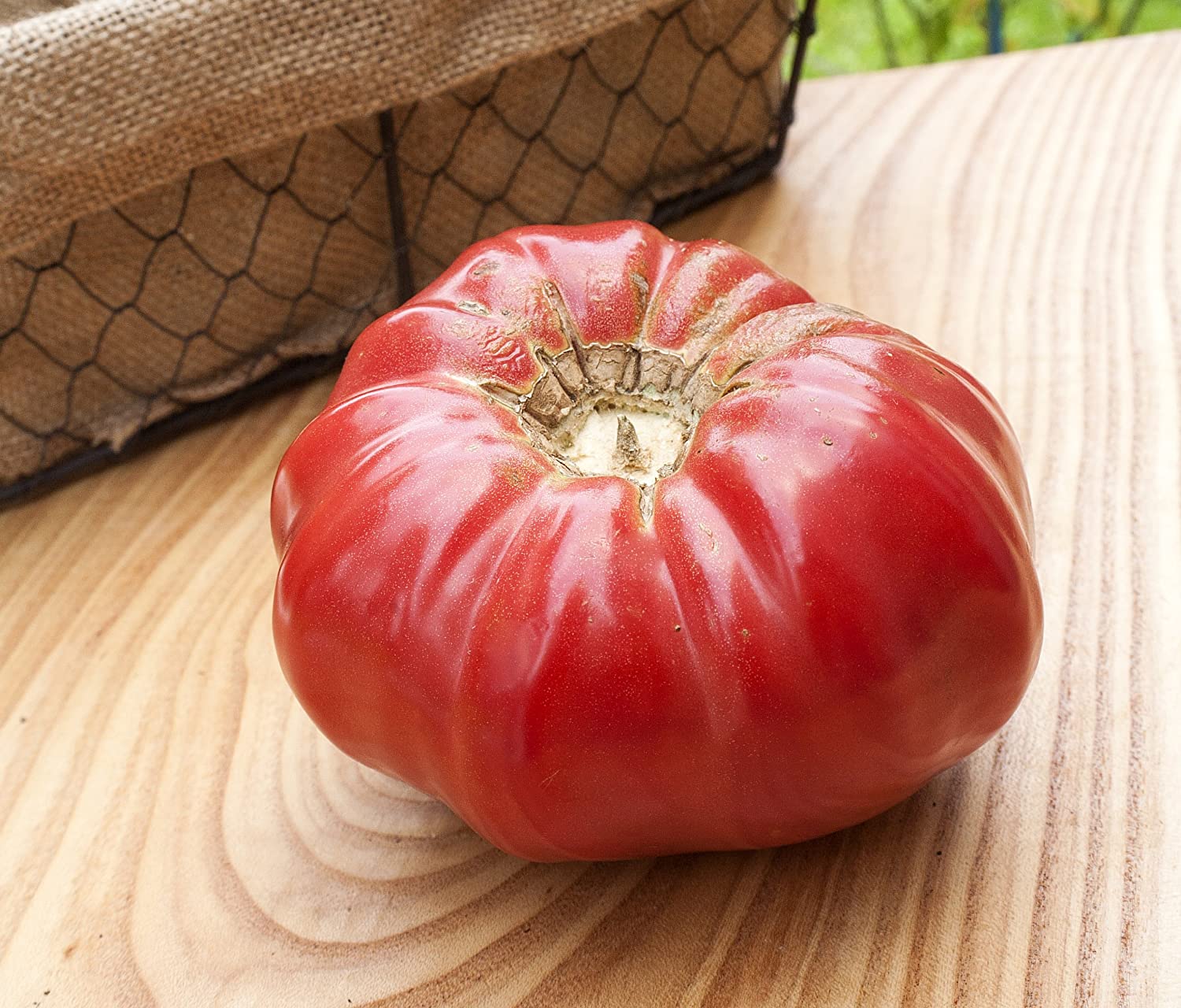
As I mentioned in the introductory paragraph, Brandywine tomatoes are big and beefy. These heirloom tomatoes grow up to two pounds and are similar to a pumpkin in shape. They come in a variety of colors, including pink, red, and yellow. They are an indeterminate type of tomato plant so their vines can easily grow to nine feet tall.
While I prefer growing and eating the common pink Brandywine tomatoes, you may want to try growing the other colors too. Here’s a breakdown of what you can expect from each color of Brandywine tomatoes:
Black Brandywine tomatoes are my second favorite variety. Both black and pink varieties require the same basic care and they grow to about the same size, but they taste slightly different. The black variety has a slightly smokey flavor. Nevertheless, this is a yummy tomato and can be used in just about any recipe. I prefer to serve them sliced and raw because they are too beautiful to hide in a soup or salsa.
Red Brandywine tomatoes are very similar to the pink type, but the fruits don’t grow quite as big. They also have a great flavor that is less acidic than most tomato varieties. My husband would not complain if I added a slice of these to his BLT.
Yellow Brandywine tomatoes grow oblong-shaped sometimes resembling pumpkins. Their flavor is more acidic than the other Brandywine varieties, but that doesn’t mean I won’t use them raw. Raw is my favorite way to serve them. They are lovely-looking in salads or sliced with crackers and cheese.
One of the main ways I’ve learned to identify a Brandywine tomato plant is by examining its leaves. A Brandywine tomato plant’s leaves are smooth along the edges. Most other types of tomato plants have leaves with serrated edges.
How to Grow Brandywine Tomatoes from Seed
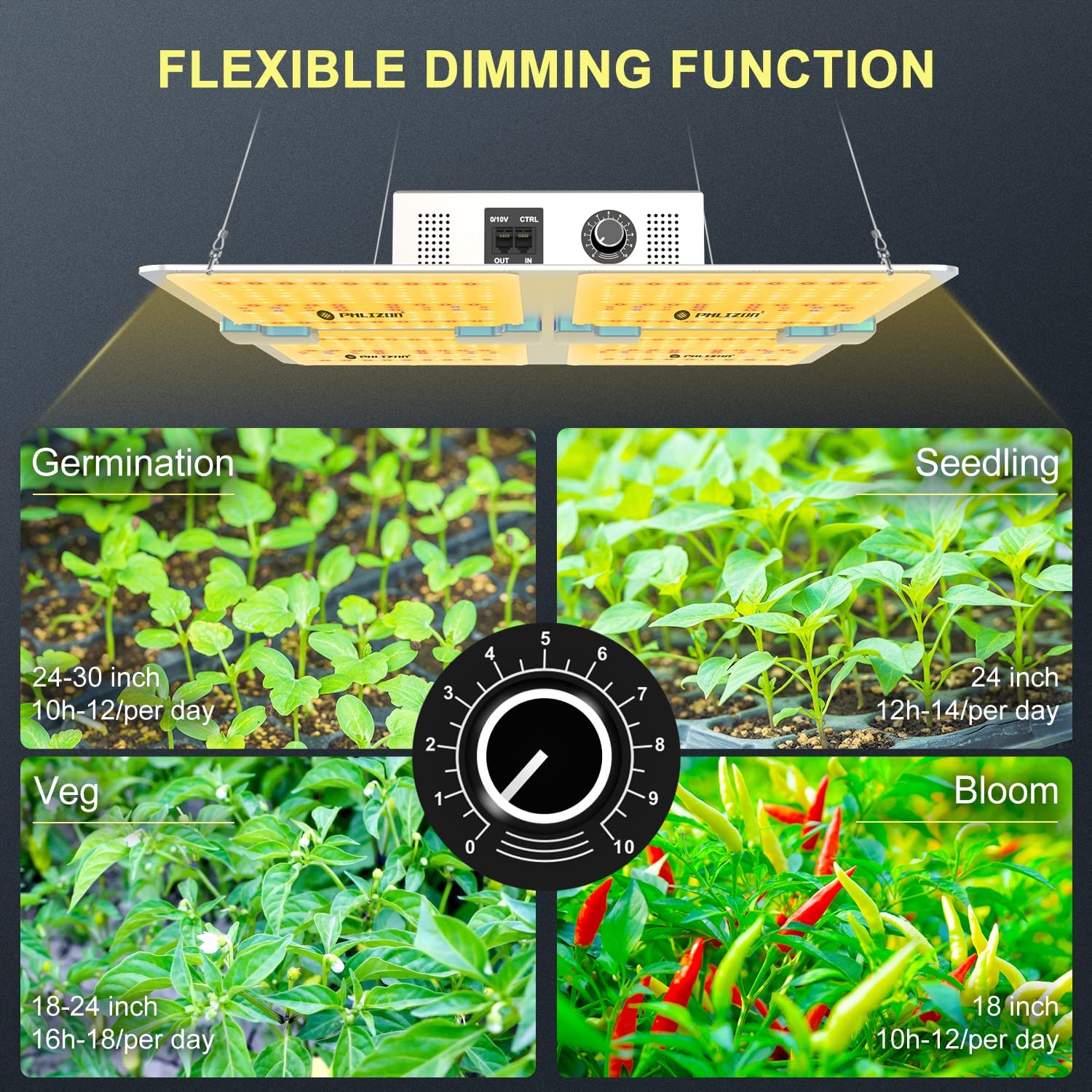
I always start my tomato seeds indoors and I recommend you do so as well. Doing this will reduce the risk of frost damage to these very delicate plants. So, you will need to get a few supplies and prep before planting your Brandywine tomato seeds. Don’t worry, this is a simple process that shouldn’t be stressful. The first thing you need to do is make a shopping list. Here’s what you need:
- Brandywine tomato seeds
- Seed starter tray
- Seed starter soil
- Spray bottle
- Heat mat
- Grow lights
Once you have all your supplies, you can begin planting the tomato seeds. Here are the steps to do this:
- Spread the seed starter soil in the seed starter tray
- Place the tomato seeds a quarter of an inch deep into the seed starter soil
- Mist the soil with water until it is moist but not soggy
- Place the tray lid onto the tray
- Set the tray on the heat mat
- Mist the soil daily to ensure that it remains moist
Once you see sprouts growing in your seed tray, you will need to treat them differently than how you treated the newly planted seeds. This is how I care for my tomato sprouts while they are indoors:
- I permanently remove the lid of the seed tray so they adjust to a regular climate
- I set the seed tray under grow lights so they have access to plenty of light (you can also place them in a sunny window if you don’t have to grow lights)
Once the daily air temperature has risen to 55° F and soil temperatures are at least 65° F, I begin acclimatizing (hardening off) the sprouts to outdoor conditions. My process for doing this includes the following steps:
- I check to make sure the threat of frost in my area has passed. I use this website.
- I take the sprouts outside during the day only.
- I set the sprouts in a shady spot where the wind is blocked.
- I bring the sprouts inside before the sun sets.
- I examine the sprouts each day to make sure they are not being damaged by the weather. I move them if needed.
- I repeat this daily routine for ten to twelve days and then I plant the sprouts in an outdoor garden plot.
How to Harvest Brandywine Tomatoes Seeds
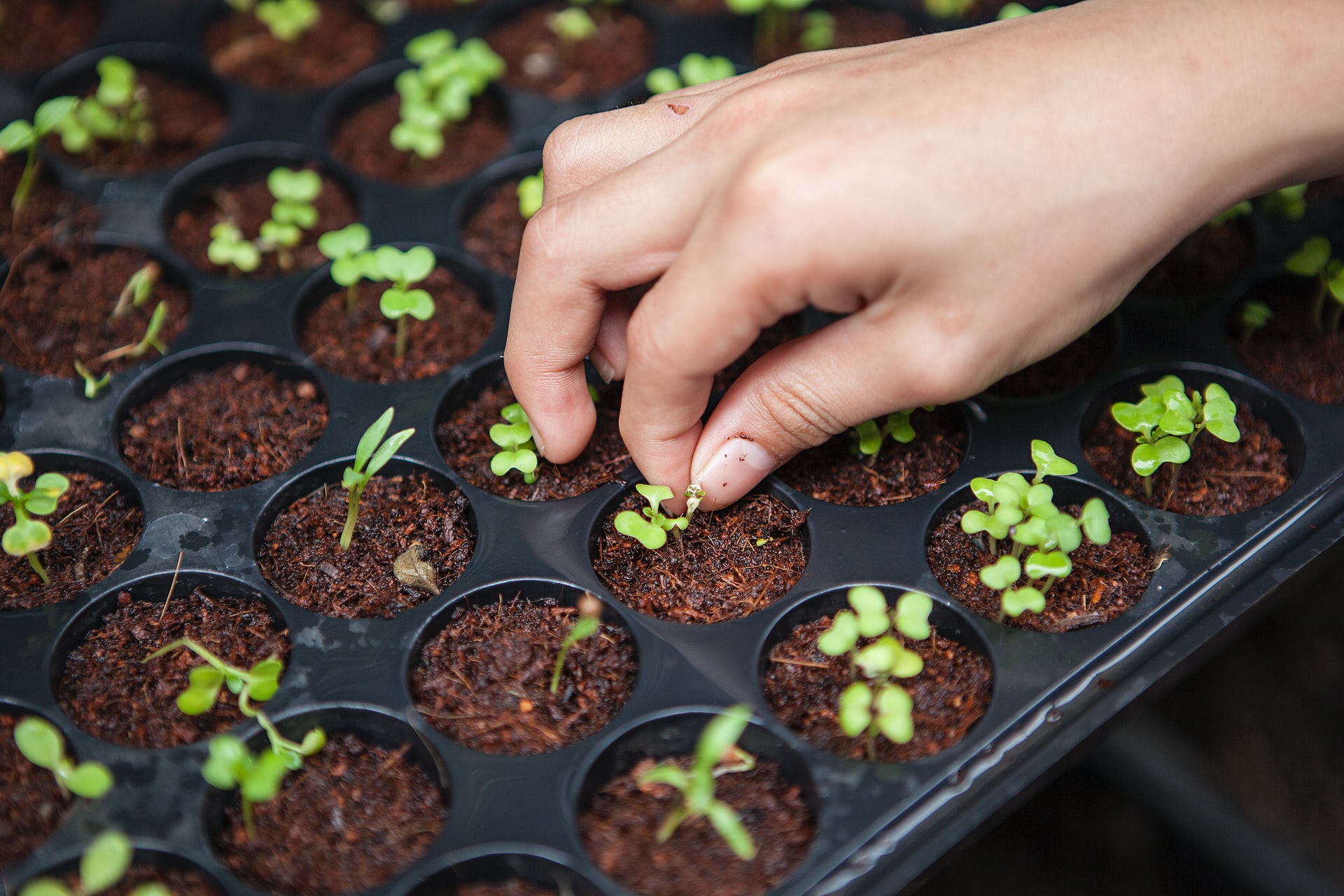
If you intend to grow a tomato garden next year from the tomatoes you harvested this year, you will need to plan ahead. Since Brandywine tomatoes are a special heirloom variety, I assume you want to grow tomatoes that are true to variety. If this is the case, then you need to set up some barriers in your garden to prevent cross-pollination; if you are not, then don’t worry about barriers.
To prevent, or at least, reduce cross-pollination, try one of these barrier methods:
- Plant tomato varieties at least twenty feet apart and keep pollen-producing plants in between them. A quarter of a mile is highly recommended for optimal results.
- Bag the blossom with a lightweight material before it opens. This will prevent it from cross-pollinating with other tomato plants, but it will also require some extra work on your part. For instance, you will need to shake the bag once in a while and remove the bag and mark the blossom for seed harvesting later.
- Use an isolation cage to prevent pollinating insects from contaminating your plants.
- Stagger the plants’ growing season. If your tomatoes produce blossoms at different seasons, they won’t have the opportunity to cross-pollinate. This will require some logistical decisions on your part, but it isn’t a bad idea, especially if you live in an area with long summers.
I typically isolate my heirloom tomato plants by distance, rather than with a bag or an isolation cage, but you do what you think is best in your garden. The reality is, that isolation is only possible if you have the space.
To get a harvest of tomato seeds is very simple. Once you begin picking healthy tomato fruits, you can begin prepping for next year’s garden. Here is how I harvest tomato seeds in my garden:
- I select healthy fruit from the center of my tomato plants, especially if I’m concerned about cross-pollination that year
- I cut the tomato in half and squeeze out the seeds into a colander
- I separate the seeds from the skin and pulp (I use the pulp to make a pasta sauce or salsa)
- I set the seeds on a paper towel to let them dry out (this takes a few weeks)
- I put the paper towel in a shady spot that is cool and dry
- I store the dried seeds in a paper envelope that has been dated and labeled (these should be stored in a cool, dry, and dark spot)
When to Plant Brandywine Tomatoes
Brandywine tomatoes, nay, all tomatoes should be planted outside only after the last frost of the season. You will need to check your area to ensure that the cold weather is over and it is safe to plant tomatoes outside. Typically, air temperatures should be above 50° F at night while soil temperatures should be 65° F.
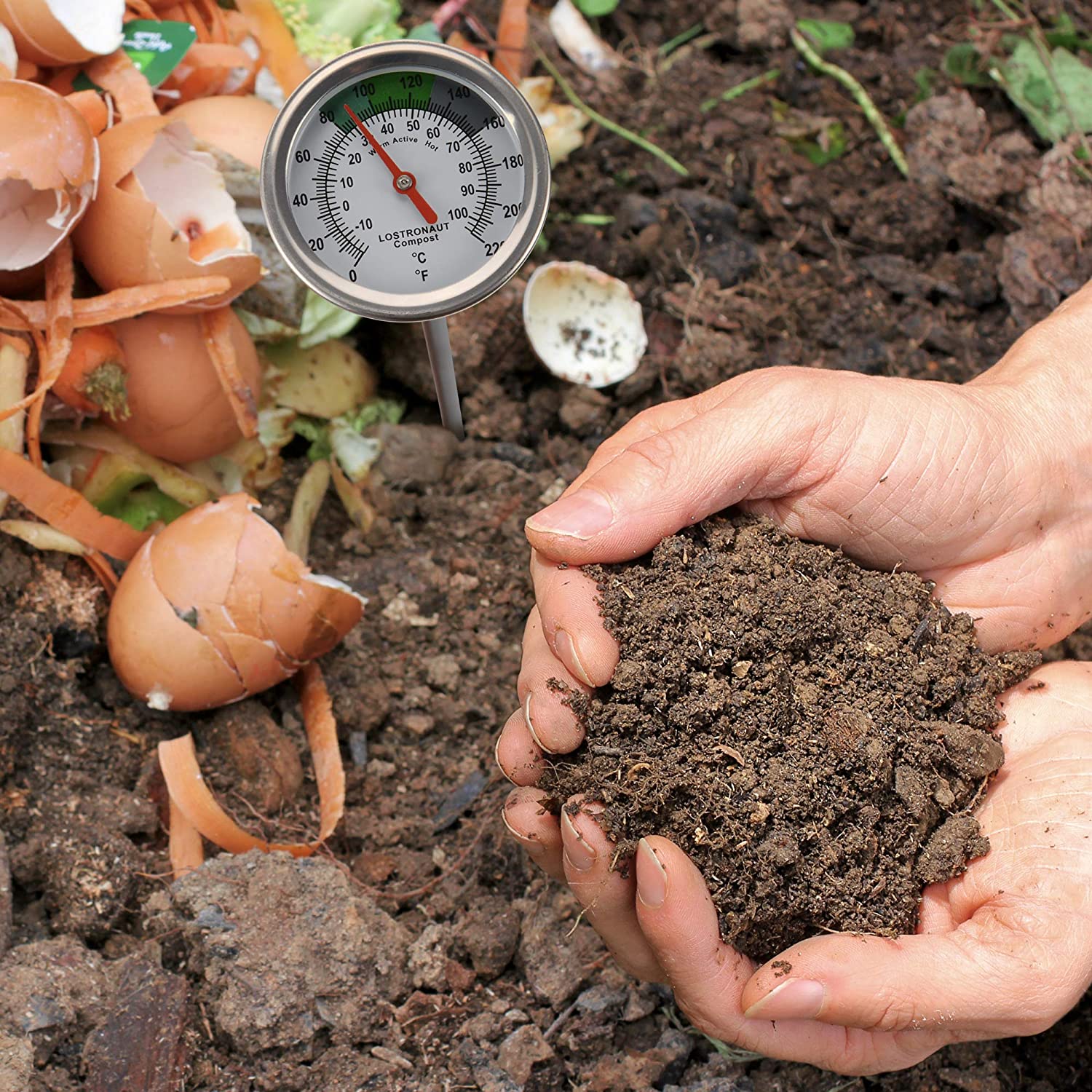
Check your garden soil with a soil thermometer.
How to Plant Brandywine Tomatoes
Once you know that seasonal temperatures are stable and ready for gardening, it is time to prep a garden plot. Since Brandywine tomatoes are indeterminate, I recommend that you add either a stake or a trellis for them to vine on. This will keep the tomatoes off the ground and away from certain pests and diseases. This is the trellis that I like to use.
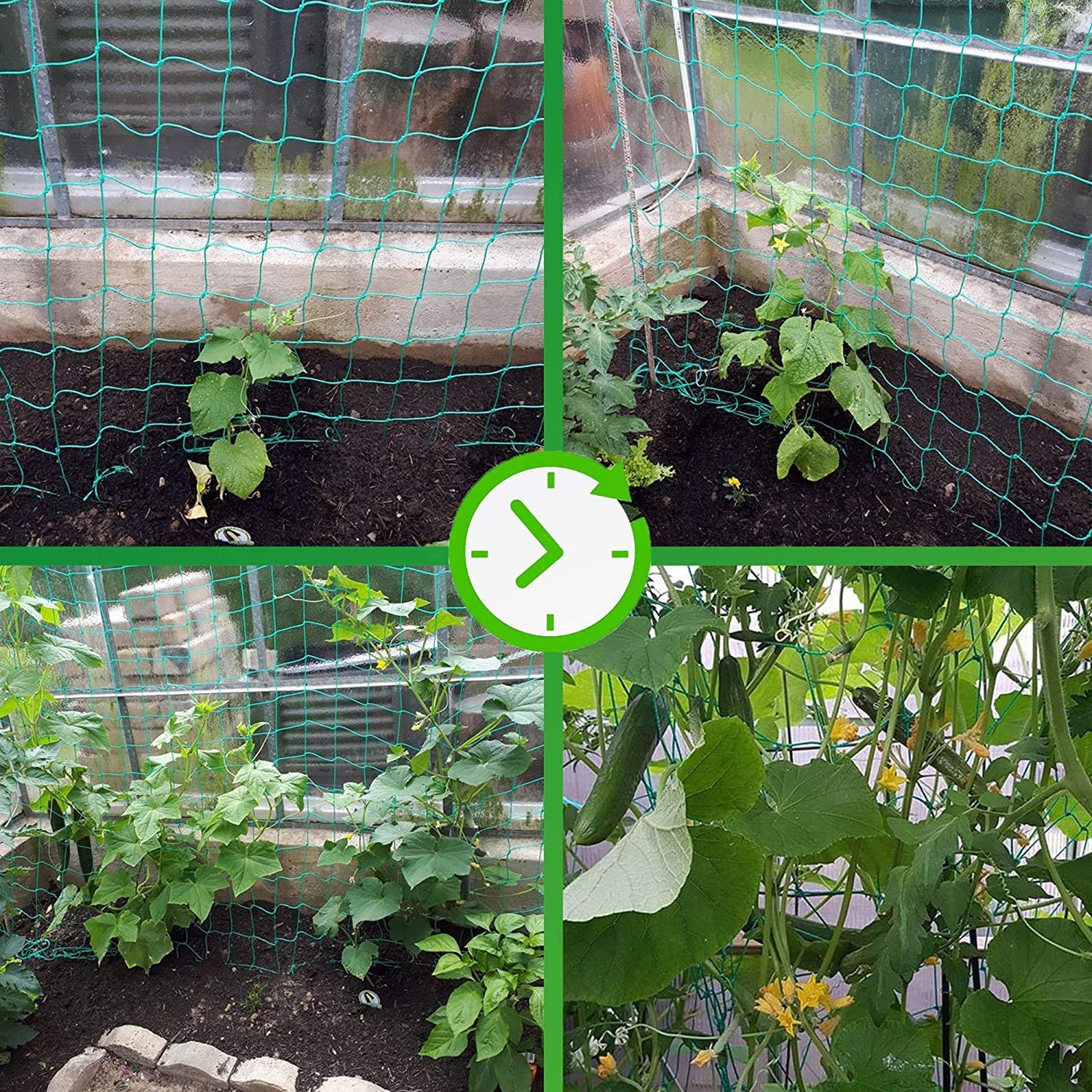
Here are the steps for transplanting tomato sprouts from indoor to outdoor plants:
Begin hardening the tomato plants approximately two weeks before transplanting
- Select a garden plot that receives 6 to 8 hours of full sunlight each day
- Select a garden plot that has features and soil that are well-draining
- Dig a twelve-inch hole for each tomato plant; space each hole 18 to 24 inches apart
- Fill the bottom of each hole with three inches of compost
- Remove the bottom leaves of each sprout but ensure that there are several healthy leaves at the top of the plants
- Carefully remove the sprouts from their current container and place them into the garden bed
- Secure the sprouts in the soil
- Place a trellis or stake near the plants
- Hold off on fertilizing until fruits appear
Best Brandywine Tomato Fertilizer

I like Miracle-Gro Tomato Plant Food for all tomato varieties, including Brandywine. It is an 18-18-21 water-soluble plant food that can be used every one to two weeks. If you notice your tomato plants are producing more foliage than fruit, you may need to back off on the fertilizer.
Brandywine Tomato Soil Requirements
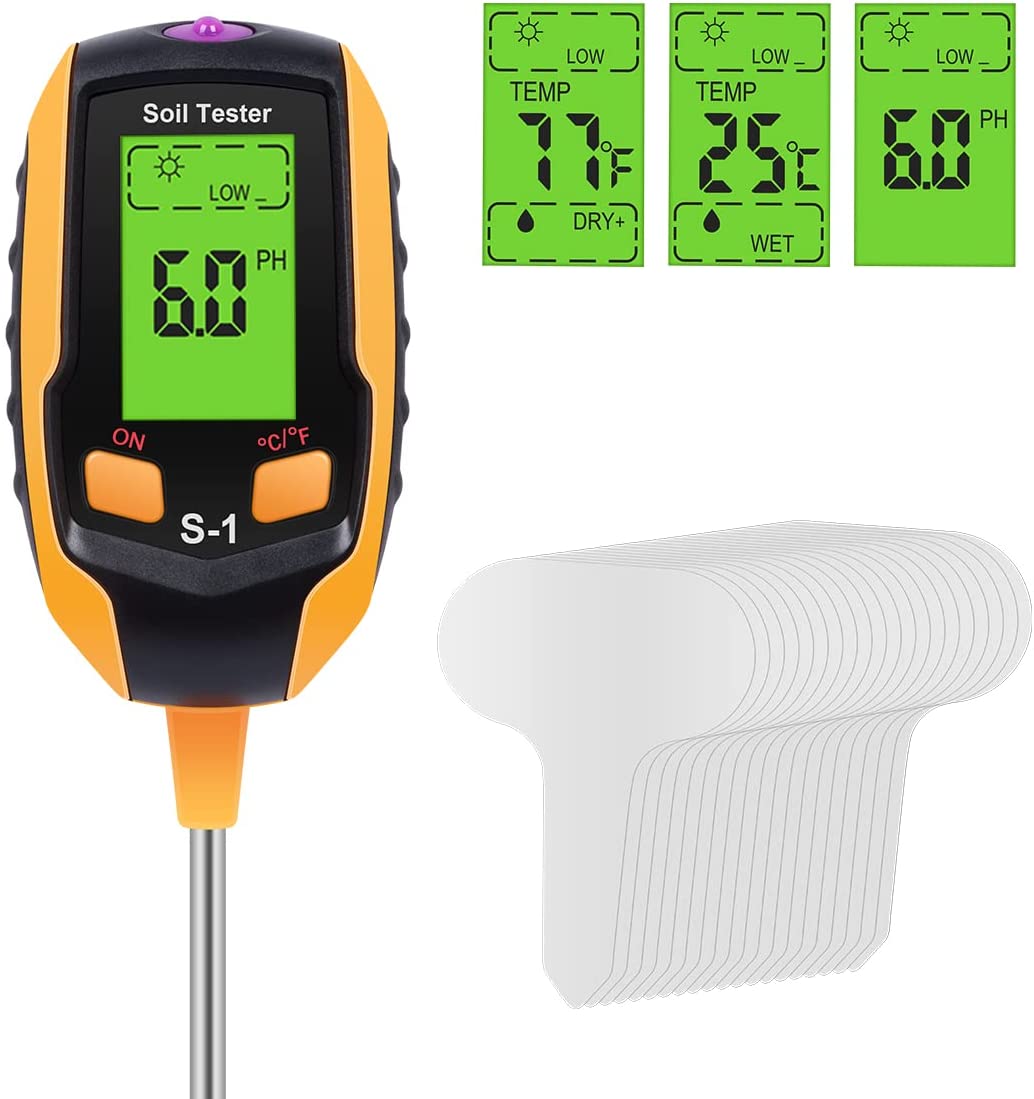
Brandywine tomatoes require a certain type of soil and pH levels to grow well. So, before I transplant my tomatoes into a garden plot, I always check and prepare their spot. I ensure their garden spot is well-draining and the soil has a pH level of 6.5 or thereabouts. This is the soil pH test that I recommend.
Brandywine Tomato Light Requirements
Every variety of tomato requires a lot of sunlight. When you select a garden plot for your tomato plants, whether they are Brandywine, Beefmaster, or Amish Paste, ensure that it receives 6 to 8 hours of full sun every day.
Brandywine Tomato Water Requirements
I check my tomato plants every day to make sure they don’t dry out; I want those delicious Brandywine tomatoes at the end of the season. Now, sometimes they don’t need any water, but most of the time, they do. To find out if they need water, I test the top two inches of soil around their base. If the soil is dry, I water the plant thoroughly. If the soil is moist, I leave it alone until it is dry.
Best Brandywine Tomato Companion Plantings
I love companion planting in my garden. It’s a great way to provide my plants with extra nutrients, support, and help while they are growing. Here are three of my favorite garden companion plants for my Brandywine tomatoes:
Dill
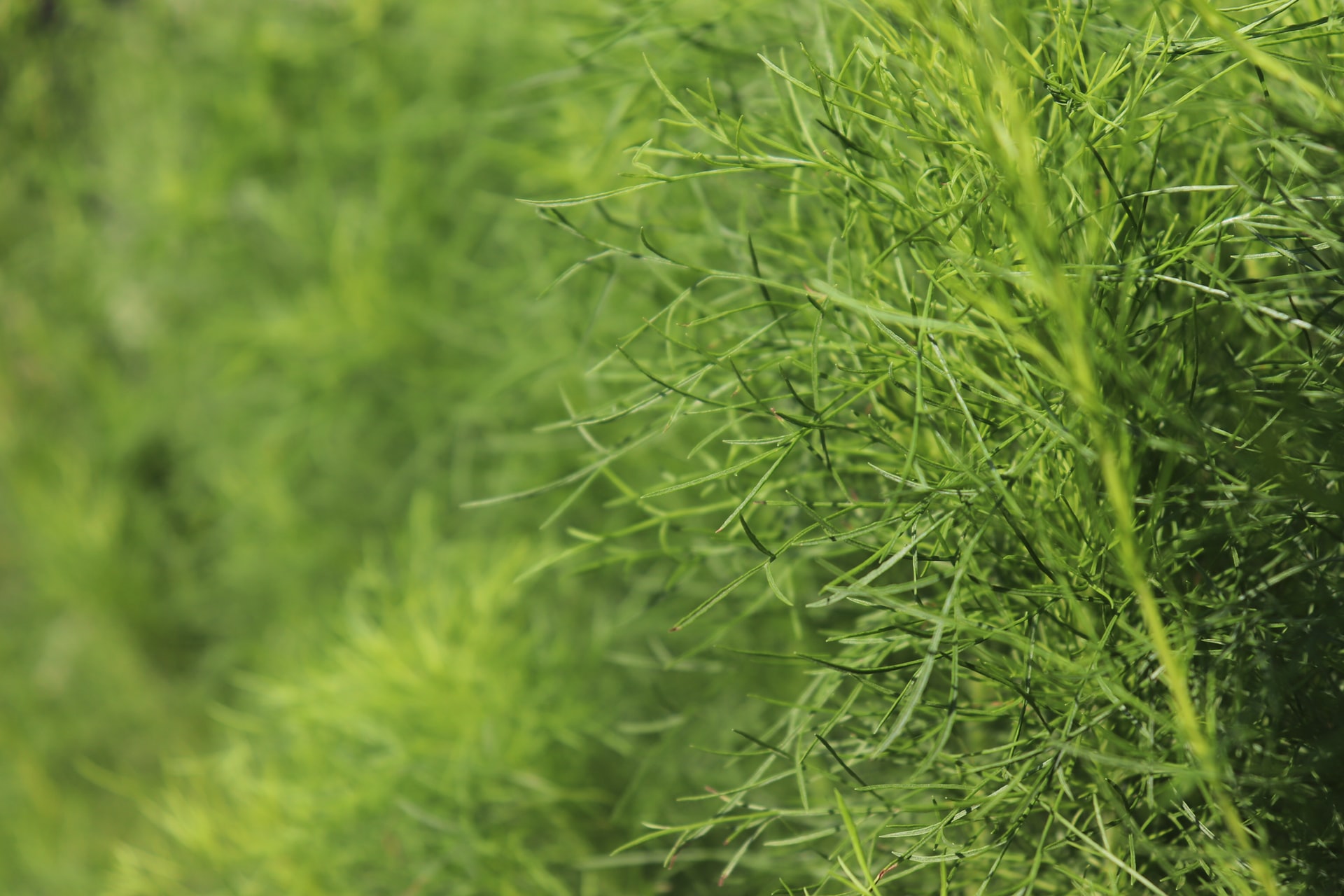
This herb will attract hornworms, which in turn, keeps them off my tomatoes.
Basil
Yes, I like to use this herb for extra flavor on my Brandywine tomato sandwiches, but it works double-duty as a garden companion. With basil next to my tomatoes, I know whiteflies will not be a problem.
Roses
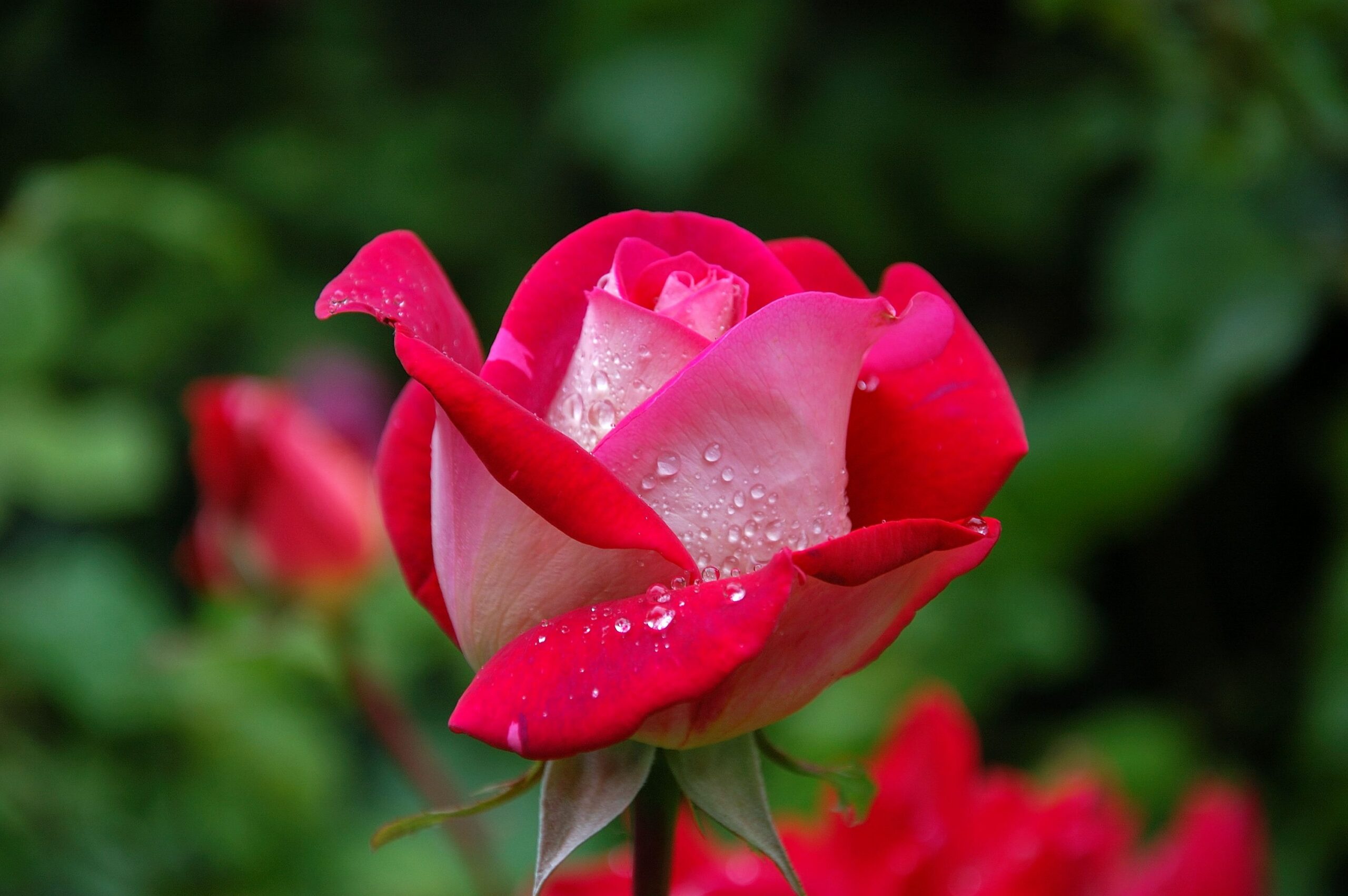
Not only are roses beautiful but they ward off black spots from tomato plants. This is a win-win companionship.
Brandywine Tomato Treatments and Maintenance
While Brandywine tomatoes are resistant to tobacco mosaic virus and verticillium wilt, it is not uncommon for me to find some other pest or disease on my tomato plants. Sure, I plot out my garden so that companion plants are within reach and pesky plants are far away, but bugs and diseases have a way of getting through nonetheless.
Because these issues are so prevalent, I want to give you a heads-up so you can prepare to deal with them. Here are some of the most common pests and diseases that I find in my tomato garden and how I choose to handle them:
Aphids
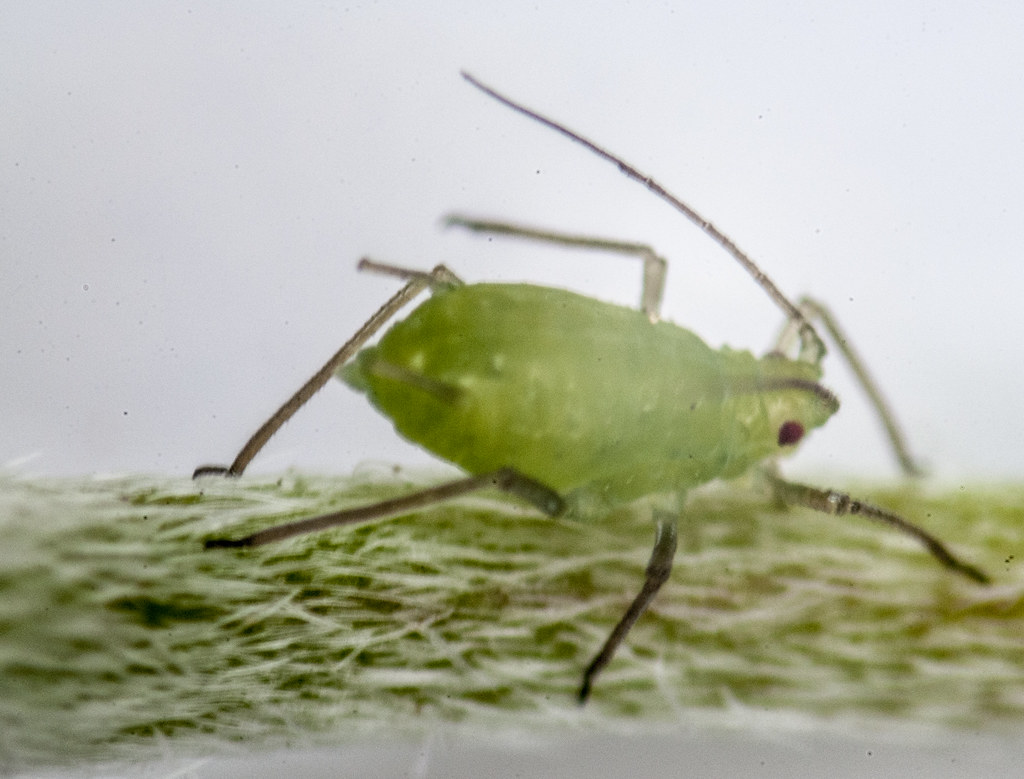
These tiny insects are mostly found on the stems and leaves of infested plants. When I find them on my tomato plants, I first check to see if I have an infestation of ants as well. Since ants feed on aphids, they will fight to keep other predatory insects from getting to the aphids.
So, to get rid of aphids, I have found that I often need to get rid of ants. To do this, I try to attract them to other interesting plants. These plants include dill, fennel, and mint. What a simple and delicious solution!
Blight
If I notice brown spots on the stems and leaves of my tomato plants, I assume they are infected with the blight. Since this is a difficult issue to control, I act quickly. An application of a fungicide is the first step I take. This should control its spread. If however, the blight begins to spread or the plant doesn’t heal, I remove the infected plant. I don’t want to risk losing a garden full of tomatoes just to save one plant.
Corky Root Rot
If I notice any plant beginning to look like cork, I will take immediate action. Corky Root Rot is not treatable and is highly damaging and contagious. Any plant with this issue is removed and destroyed. The soil is fumigated.
Curly Top
This is one of those viruses that seem threatening but are not so bad if caught in time. Curled leaves are a sign that your tomato may be dealing with this virus. Simply apply neem oil to the plant to ward off its effects.
Cutworms
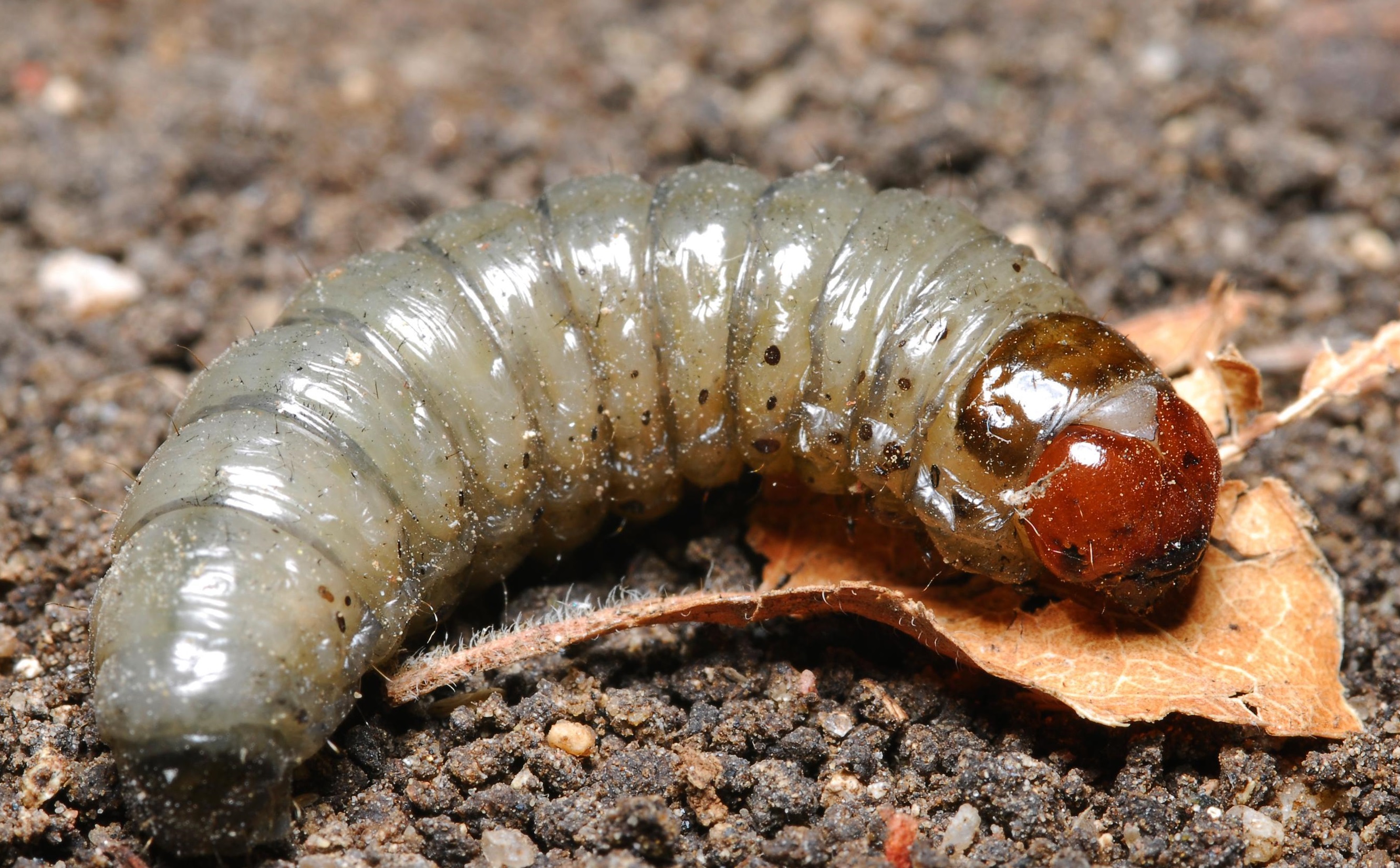
If I see one of these inching its way up a tomato plant stem, I remove it and throw it far away. As an extra safety measure, I apply a pesticide.
Flea Beetles
Noticing these pests can be a little tricky. They look and behave like typical fleas, but they enjoy munching on fruit and vegetables rather than people and animals. To deal with flea beetles, I sprinkle talcum powder all over the tomato plant.
Grey Mold
This fungus looks fluffy and gray and will spread all over the plant. Not only will it do this, but it will also cause the plant to grow irregularly and produce oval lesions. I apply a fungicide to plants that have grey mold.
Hornworms
This is another nasty worm that I remove upon sight. When I notice too many of these in my garden, I use Bacillus Thuringiensis on infested plants.
Nematodes
With over 20,000 species of nematodes to consider, it is often difficult to decide if the ones on my tomato plants are harmful or beneficial. Instead of dealing with these directly, I add the beneficial types to my garden with the assurance that they will handle the harmful types.
White Mold
Tomato plant leaves that appear to have a light powdering substance on them are usually dealing with white mold. To treat this issue, I spray infected plants with a mixture that contains one part milk and five parts water.
Whiteflies
These pests are easy to identify by the honeydew they leave behind on stems and leaves. When I notice trails of honeydew on my tomato plants, I wipe some horticultural oil on them.
Where to Purchase Brandywine Tomatoes Online
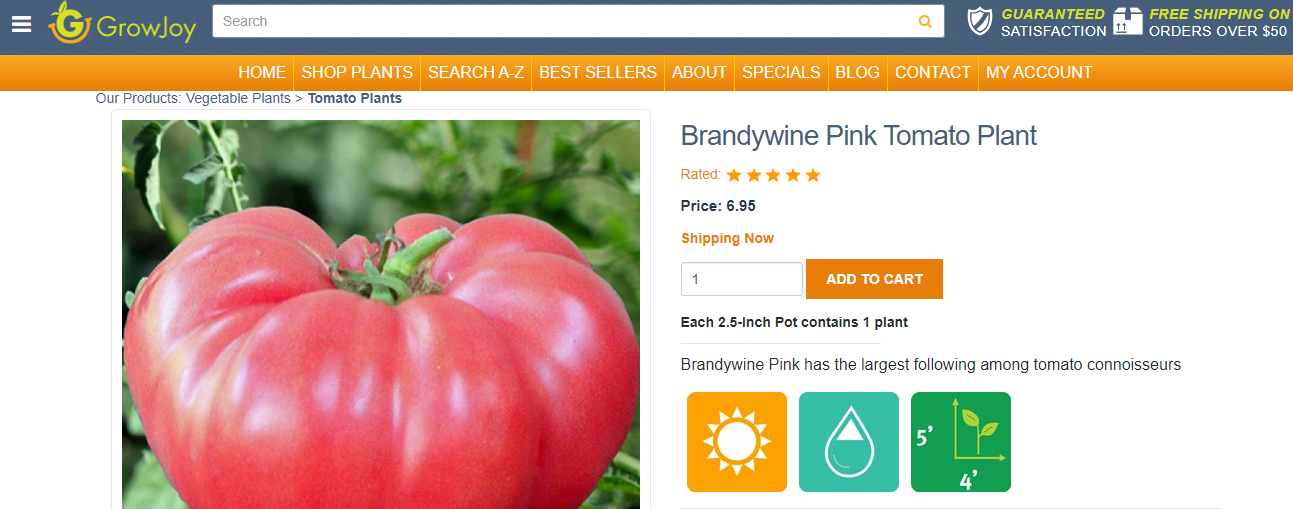
I know you’re longing to grow some Brandywine tomatoes so, you too can have the best tomato sandwiches ever. First, you’ll have to order some plants or seeds from one of these stores (the wait is worth it):
FAQs
Answer: Sure, it is good to know which plants are good companions, but I think is just as necessary to know which ones are bad companions. Here are three plants that you should keep far away from your tomatoes:
Potatoes: The blight loves potatoes as much as tomatoes. Don’t risk losing two amazing plants at the same time by setting them near each other in the garden. Now, once they are harvested, I say let them be friends.
Corn: This plant, along with tomatoes is very attractive to corn earworms. If one plant gets infested, the other will also. Avoid a double infestation by separating corn and tomatoes in the garden.
Broccoli: This and all its family members are known to stunt the growth of tomato plants. Keep your tomatoes big and juicy by separating tomatoes from the Brassicaceae family.
Answer: Brandywine tomatoes grow well in zones 3 through 9.
Answer: Yes, you should prune the suckers off this variety as it grows. This will increase the number of tomatoes each plant produces and help increase the size of each tomato.
In Conclusion
I enjoy growing Brandywine tomatoes. Perhaps I enjoy cooking with them more, but I’m not sure. After all, there’s nothing quite like sharing produce from your garden at your kitchen table. Hopefully, this article has shown you the benefits of growing Brandywine tomatoes in your home garden. Just think, with a little dirt, water, and time, you’ll be tasting the best sandwiches of your life.
You’re here to learn how to grow tomatoes, so let’s keep the river of information flowing. Improve your tomato garden with the help of Jardin HQ’s garden-savvy writers. Specifically, I recommend you look at the following articles:
- White Spots on Tomato Troubleshooting
- How to Start a Vegetable Garden: All You Need to Know
- Garden Tower Project Review: How To Start Home Gardening ASAP?

